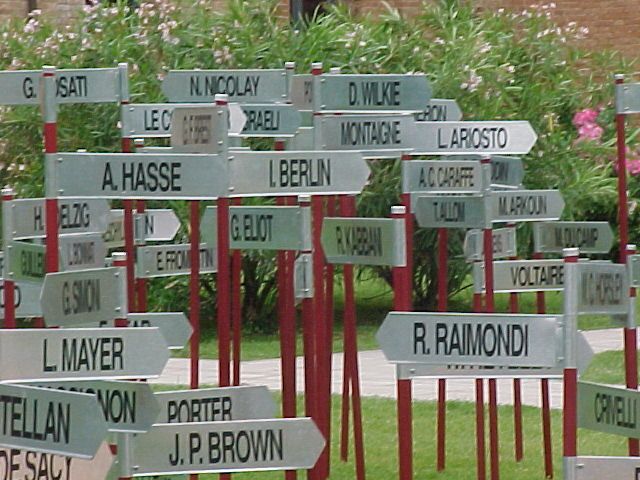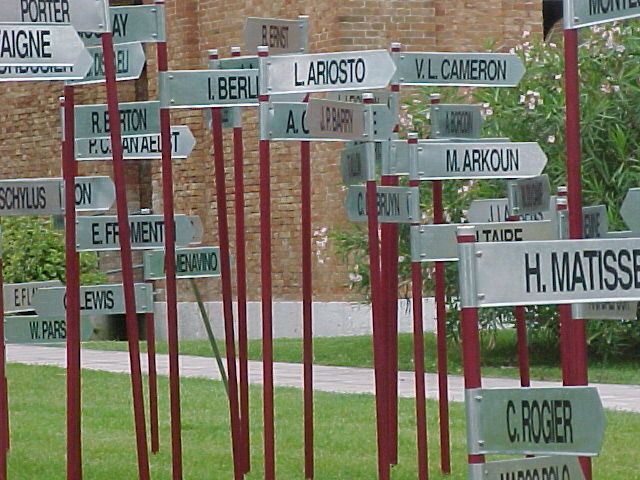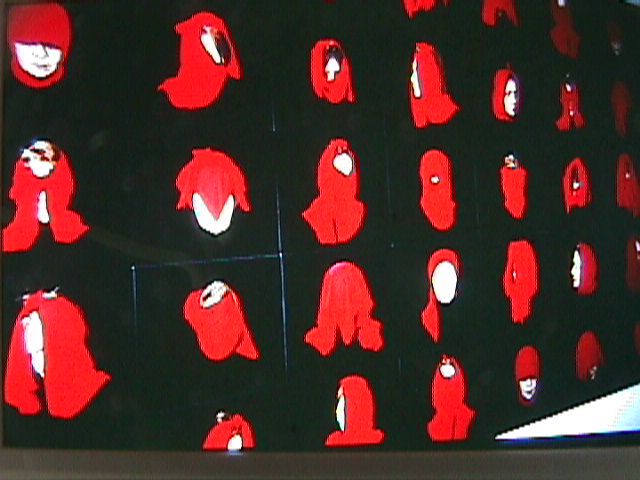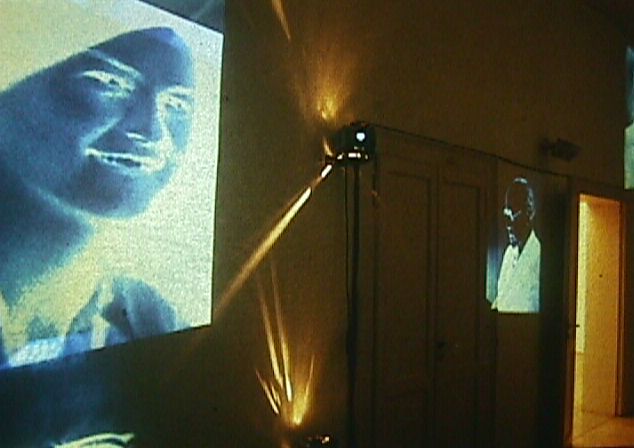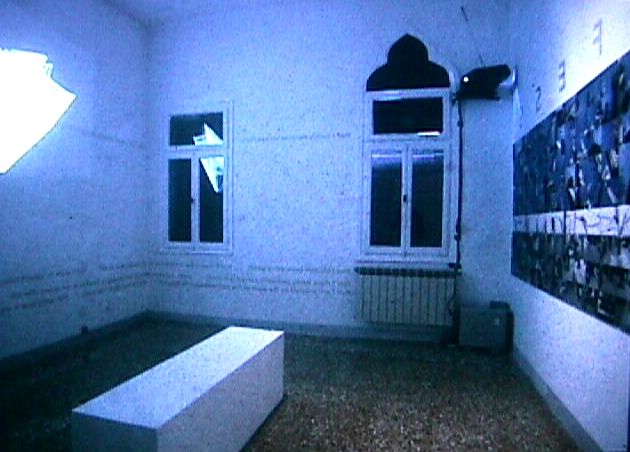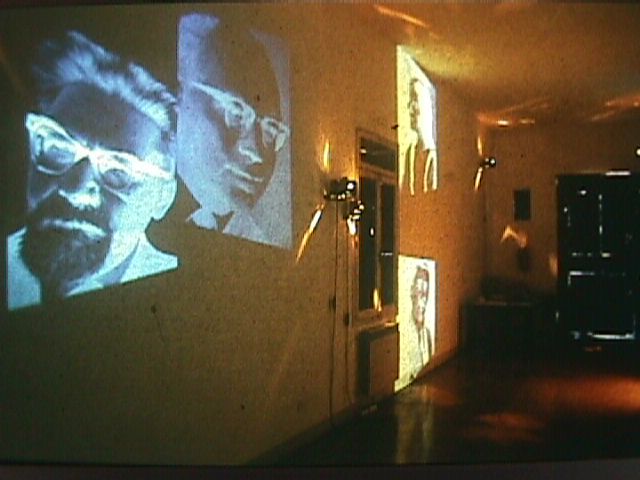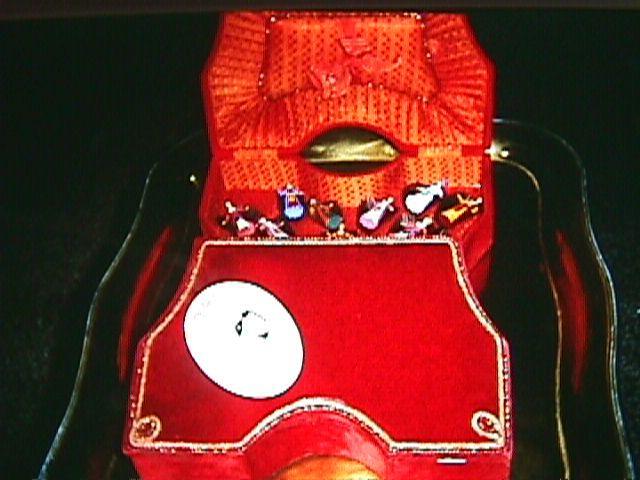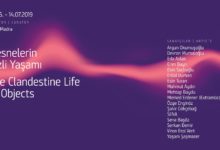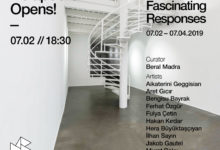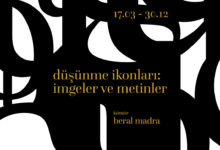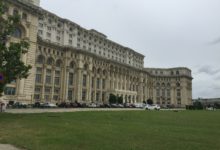Press Release/Basın Bülteni
THE PERFUMED GARDEN/KOKULU BAHÇE
9 June/Haziran-4 November/Kasım 2001
Nuova Icona, Giudecca
Thetis SpA, Arsenale
Main Sponsors/Serginin ana sponsorları Borusan Kültür ve Sanat Merkezi, Türk Pirelli Lastikleri A.Ş., Nurol Matbaacılık ve Ambalaj Sanayii A.Ş.’dir.
Supported by/Sergiye Korpap Kağıt ve Karton Sanayi A.Ş.,Kordağıtım Pazarlama A.Ş.,Sappi ve Alitalia, Doluca Şarapları, Selahattin Beyazıt Şirketler Grubu ve İstanbul Bilgi Üniversitesi destek vermektedir.
Artists/Sanatçılar:Butch Morris, Murat Morova, Ahmet Öktem, Sermin Sherif, xurban.net
Venedik Bienali’nin bu yılki küratörü Harald Szemann’ın koyduğu “İnsanlık Platosu” genel başlığına bir gönderme olarak “Kokulu Bahçe” (The Perfumed Garden) www.theperfumedgarden.net başlığı altında iki bölümden oluşan bir sergi gerçekleştirilecektir.
Nuova Icona Galerisi’nde Murat Morova (Turkish Delight), Ahmet Öktem (Transit Identities), Sermin Sherif (Scarlet Scarf), xurban.net (I Confess) başlıklı yapıtları, Thetis Parkı’nda ise, dünya kültürünün Oryentalist yazarları, sanatçıları ve düşünürlerinin adlarını içeren levhalardan oluşan bir yapay çiçek tarhı ortak bir açık hava yapıtı olarak yer almaktadır.
Bilindiği gibi, “Kokulu Bahçe” 1394-1433 arasında Seyh Ömer Ibn-i Muhammed El Nefzavi tarafından yazılmış, Doğu’nun aşkını, cinselliğini ve kadınlarını anlatan bir kitaptır ve 19.yy’da birkaç kez, farklı yazarlar tarafından dipnotlarla beslenerek Fransızca ve İngilizceye çevrilmiş ve Batı’da Binbir Gece Masalları kadar beğenilmiş ve ünlenmiştir. Bu kitap, özgün içeriği ve Batılı’ların yaptığı eklemelerle yalnız Doğu ve Batı arasındaki yoğunlaşmış ve karmaşıklaşmış kültürel ilişkinin bir metaforu değil, aynı zamanda, Oryentalizm ve Post-oryentalizm bağlamında ve Doğu/Batı ikileminde bir çeşit hazır-nesnedir. Kitap içiçe geçmiş iki öyküyü ve iki farklı bakış açısını barındırır. Özgün içerik çeşitli çevirilerin ve dipnotların arkasında gizlenir; yüzyıllar arasındaki uzaklığı aşarak farklı yazarların ortak metni durumuna gelmiş, yazarların dönemlerine ait kültürlerin ve ideolojilerin özelliklerini içine almıştır. Günümüzdeki sanat yapıtları da benzer biçimde, üretildikleri kültürün içinden çıktıktan sonra dünyayı gezmekte, başka kültürlerin insanları tarafından yeniden yorumlanmakta ve değerlendirilmektedir.
Serginin 5000 adetlik yayınının editörlüğü Serhan Ada, grafik tasarımı Onur Bayiç ve Gözde Oral tarafından yapılmıştır. Gazetede Serhan Ada, Oruç Aruoba, Ayşe Kadıoğlu, Beral Madra, İlber Ortaylı, Zeynep Sayın, Vittorio Urbani, Anna Vanzan, Meyda Yeğenoğlu ve Levent Yılmaz’ın yazıları yer almaktadır.
Sergi, Kasım 2001’de Borusan Sanat Galerisi’nde Istanbul izleyicisine sunulacaktır.
Catalogue Text
THE PERFUMED GARDEN
AN IN (DE)TERMINABLE OSCILLATION BETWEEN ORIENT AND OCCIDENT
The group show of artists from Turkey (Butch Morris, Murat Morova, Ahmet Öktem, Sermin Sherif, xurban.net with installations, photo-, video-, internet – works and music have been realized in the 49th Venice Biennial, owing to the generous offer of Vittorio Urbani, director of Nuova Icona art association to host the Turkish Pavilion in the association’s gallery. The show is extended into the garden of Thetis in Venice Arsenale, a noble contribution of Thetis SpA.
Under the aegis of deeply embedded and historically framed geographical, economic, and cultural exchanges between Venice and Istanbul, a friendship between the curators Beral Madra and Dr. Vittorio Urbani and collaborative work that involved Urbani’s gallery, Nuova Icona, has led to the flourishing of a new and productive program of art-exchange. The first manifestation of this program has already been realized in Borusan Art Gallery, Istanbul (December 2000) with an exhibition entitled “Too beautiful to be true,” presenting the recent works of four Venetian artists.
The Perfumed Garden is an exhibition designed for the 49th Venice Biennial in order to construct an environment that might facilitate a reconsideration of the much discussed yet still difficult and relevant question of the various articulations of the orient and the occident. Taking Istanbul as its bearing point, The Perfumed Garden constitutes an attempt to explore (through the works exhibited) the line that simultaneously blends and divides the orient from the occident in our late modern condition; representing and staging the orient once again to the visual pleasure of the Western legacy of perceiving. This may seem to contradict the ongoing theory and practice of globalization and multiculturalism, but the curators and the selected artists are driven with a desire to explore the problems of subjectivity and authenticity once more, especially in the context of the so-called proliferation of processes of communication among those still speak from a position of power and those that are still excluded from power.
The title of the exhibition, The Perfumed Garden, is borrowed from the title of a book, presumably written between 1394-1433, in Arabic, by Seyh Ömer Ibn-i Muhammed El Nefzavi and translated into French and English in the last quarter of the 19th century. The book poetically deals with the sexuality of mankind and asserts that sexuality is the natural and inseparable manifestation of our emotional world.
The title is borrowed not only because it harbors multiple condensations and displacements for interpreting the cultural exchange between orient and occident, but also because, regardless of its contents, the book itself has become a kind of ready-made, an object/subject of the encounter between the East and the West. Furthermore, the content of the book with its poetic and sublime texture, once juxtaposed to the omnipresence of rough and abject sexuality in contemporary art production, produces an uneasy feeling of anachronism.
The book contains two narratives entwined in each other: One is the original narrative concealed within various translations and the other is the translated text with footnotes. The original one is a literary text that describes sexual intercourse as a kind of sublimation. The other narrative as an intervention to the original text, is the (re)presentation of the latter to the Western audience and as such it comprises an orientalist appropriation. In other words, although the two narratives perceive sexuality from contradictory positions, they are unavoidably united in a single text. The book traveled from the East to the West passing through layers and layers of translations, transformations, and ended up with a different transcription. This adventure itself is worth in investigating: Curiously enough, through the process, The Perfumed Garden became a collective endeavor created by a number of authors of different periods, religions, communities, and ideologies. Here again, it is comparable to today’s artworks travelling from one exhibition to the other, from one context to another, becoming different from itself in the eye of the beholder.
The same overdetermined situation can be also observed in the production of contemporary artworks dealing with love and sexuality; the visual metaphors – sometimes ready images, sometimes fictions – are the intricate outcome of the original events as processed by the artist, seriously implicated in his/her ideological stance, in his/her territorial locality and in the broader context of art scene, as well as in the calculations the artist makes regarding the presumed impact the artwork will make on the viewer.
It is obviously one of the oldest books dealing with sexuality (after Vatsayana’s Kama Sutra and Kalyana Malla’s Ananga Ranga) and it found its way to the very center of European culture at the peak of colonialism and Victorian conservatism. In this period, The Perfumed Garden happens to be a perfect tool for the discourse of Orientalism, “a discourse which represents the exotic, the erotic, strange Orient as a comprehensible, intelligible phenomenon” (Turner 21). Also according to Rana Kabbani, the translation of Burton with his extensive notes is one of the significant examples of Orientalist myths. Thus, ambiguously, the book has also become a phenomenal material for post-colonial criticism.
To name it an artwork/cultural production of the Early Islamic culture would now sound false, but considering its date of creation, the book is an example of tremendous avant-gardism in comparison to the literature in Europe during and long after that period. When published and circulated in Europe it was still not accepted as a part of human heritage but was utilized “to emphasize difference in order to account for the uniqueness of the West” (Turner 32).
For us, The Perfumed Garden became a metaphor to explore and examine the current cultural and socio-economic exchanges as generally proclaimed in the ideologies and practices of globalization and particularly pronounced in the international art circles. It is easily observable that, since the beginning of nineties, art and theory exchanges among the centers and the peripheries have gained a tremendous momentum. The most profound manifestations of this exchange are the biennial and biennial-like great exhibitions where audiences can see and explore the works of artists from remote countries and places next to the works of famous/familiar ones. The most positive aspect of this exchange is that these great exhibitions are being presented all over the world to the need and consumption of ideologically, economically and culturally different societies. These traveling artworks introduce an extremely a wide range of knowledge/information in the form of political, social, cultural, and psychic background material that are embedded in the tectonic layers of visual metaphors. If the art community, artists and the experts of art believe that the art production has already become one of the most effective component of globalization, then, the questions that this community needs to pose are the following: How effective are these artworks and layers of metaphors in transforming/manipulating/agitating the traditional apperception of the viewer? In what extent have the question of orient/occident has been transformed or modified during the last decade of twentieth century? If one assumes that the trajectories of the artworks of the late modern/post peripheral East that find their ways to these great exhibitions resemble The Perfumed Garden, how are they currently being perceived and interpreted?
We hope that one of the territories on the Plateau of Humanity will be this garden. If a plateau is a field of immanence where different communities can dwell on and participate in production and consumption, a garden can be a locus on this plateau where the singular individuals can sow the seeds of their different dreams.
The exhibition is designed according to the given spaces, namely Nuovo Icona Gallery and the gardens of Thetis in Venice Arsenale. The main objectives were to be multidisciplinary and experimental, to respect the existent concepts and productions of the artists, to articulate the two exhibitions to the framework of the concept proposed by the Biennale Director Mr. Harald Szeeman, and to open a vista for rethinking the interminable questions of orient/occident.
In doing so, by reconsidering, questioning and rephrasing the age-old concepts of division, difference, and sameness between East and West, Orient and Occident, the mutual and the largest scale articulation and embodiment of the myth of the other, we hope to contribute to the mutual cultural understanding and exchange of information of a cultural nature between the countries involved in Venice Biennial and finally to promote contacts, communication and the exchange of experiences between the artists and the theorists of art of different cultures and their audience as well.
Butch Morris states that the concept for “The Perfumed Garden” fits well within the arena he has been working in for some twenty-five years. Even if he believes that the concept will be very likely misunderstood, as his work has been, he is convinced that to apprehend and clarify the origins and transformations of information is an enhancement to understanding. For this essential concept he generally produces music. He specificially conducts a method and vocabulary of ideographic signs and gestures used to modify or construct a real-time musical arrangement or composition. Each sign and gesture contains generative information for transmission and interpretation. This also provides instantaneous possibilities to alter or initiate rhytm, melody, harmony, articulation, phrasing and form. It is a method that applies a new social logic to the investigation of an extra dimension in music that transcends style and category, while maintaining cultural and individual integrity. Conduction maximizes potential of musical rather than an alternative. He will plant “whiffs of sound” in “The Perfumed Garden” that the audience may trigger and configure.
Murat Morova’s work “Turkish Delight” is a box of “lokum” (delicious sweets), commonly called “Turkish Delight”. The red velvet box is an authentic production of 19th century. He embellished it with artificial flowers and a metal emblem with the title The Rose of Istanbul. The box is filled it with 30 pieces of hand made and painted lead women figurines (special production of Gallery Alfa in Istanbul). Curiously, the figurines are reproduced of an orientalist watercolour illustration (around 1800). Morova, always employs and juxtaposes the traditional and post-modern underground culture cliché. Here again, he presents the most direct links within the maze of the Western gaze into the Eastern eccentricity. The Harem is the foremost cliché, as represented with the box, but it is also the fatal captivity for the women, in this case 30 in number implicating 30 nights and days of sexual pleasure in the Harem. However, these Turkish delights are produced of lead which is heavy and poisonous. The The Rose of Istanbul not only insinuates the vulva as poetically described in Nefzavi’s book, but also recalls the traditional slang which indicates frivolous women. The whole object conceals a play of traditional and post-modern cliché. In truth all of it conveys destructive convictions like male hegemony, chauvinism, sexual oppression and slavery. Morova inventively extends the play and says that he brings a Souvenir de Constantinople supposed to be full of Turkish Delights; however these delights may be the dramatic memories/souls of many Venetian women who played an important role in the Harem of the Sultans throughout the centuries.
Since the beginning of the 80’s Ahmet Öktem’s series of works are assembled like a methodical study of archives and arranged in dark rooms as if put in safekeeping. Most of the time the light source is a neon accompanying the galvanized metal boxes that are filled with legal documents mostly hard to decipher. The cold white light of the neon browses over the papers that are encrusted with blue ink and transforms the space into a claustrophobic grotto. Here, all information is concealed. Information that is supposed to reveal the truth, that is supposed to be employed by the people of a democratic state. These archives look archaic and radically contradict the high technology of the electronic information. The electronic technology however, does not prevent the traditional archives to be accumulated and preserved. Öktem investigates several avenues, one of them is this, crossing the territory between the traditional and ultra-modern information technology. The other crosses the ambiguities in writing/re-writing history. Here, he indicates the sources of history, namely the documents in the deep archive grottos all over the world. The question is how and to what extend are the scientists, theoreticians, history writers, politicians and artists etc employing these archives. And, even if these are being extensively articulated, do we consider each individual will classify these documents according to his/her belief, judgment, conviction, position, and attitude etc. that then makes this articulation more ambiguous. Öktem believes that all ideological positions are ultimately detained and convicted by the archives.
Sermin Sherif’s perfomance, photography and video work ”I am not my body I am not your body” deals with several predicaments fundamentaly inherent in reciprocal relationships and in correlation of “being and appearance”.
For generations men/women have been associated and discriminated according their appearance; traditionally set scale was based on emperialist/colonialist convictions (colour of skin, easterner/orientals) while currently the set of scale is determined by the electronic capitalism, globalism, and commodity culture (poor/rich, old/young, unattractiveness/beauty, unhealthy/slim body, fashion etc.) In the male dominated cultures (are there any female dominated cultures?) the women have been associated with concepts of sexuality and objects of possession. The body politics that was initiated by the feminist discourse and art since the early 70’s and has manifested post-human and abject art in the 90’s has opened a healing discourse and improved the position of the so called “sentenced” individuals and groups. Within the concept of The Perfumed Garden, the body becomes the elementary subject perforce. Being oriental/occidental and/or being orientalist/occidentalist are not a visible attributes and qualities of humankind. Sherif’s proposal of identifying, recognizing, distinguishing the true other and the true self (as much as possible) seems to her only possible through a self-indicted body and gesture experience. Her face and body, heretofore is a medium of performing in order to deepen the capacity of emphatic connection of the viewer and question the meaning of appearances.
xurban.net is an online collective dedicated to art and politics; it attempts to motivate/provoke theoretical/political discussions and online art works. Currently situated in real space along the East-West axis of New York and İstanbul, xurban.net realized site-specific installations with online components to circulate through the world wide web since year 2000. Core members are Güven İncirlioğlu, pope@xurban and Hakan Topal, imam@xurban. They present “Confessions: Strong from East-EastWest” 2001 for 49th Venice Biennale. When the theme “The Perfumed Garden” came up, almost without hesitation the artists have refered to “The History of Sexuality.” Not only through Edward Said indicating “knowledge-power” in the construction of the Orientalist discourse, but also Foucault’s direct references to Ars Erotica and Scientia Sexualis that belong respectively to East and the West, helped them to construct this Pool of Confessions for the Venice project, both online and in the actual space. As an ongoing project, xurban.net’s Confessions starts on the internet at the end of March 2001, as a collective pool of imagery and deepest secrets. An interactive “space,” will be set in Nuova Icona with a set of computer generated fractal coordinates to work in, around or into.The artists believe that not only in the order of taboos and sexuality, but through game and mockery the confessions may bring out the most unspeakable, the most violent desire and the hatred, possibly the hidden fascist in every man and woman of the East and the West. They say: “ After all, if the “network” had replaced God, to whom else would you confess?”
“The Perfumed Garden” in Thetis Park
Butch Morris, Murat Morova, Ahmet Öktem, Sermin Sherif, xurban.net have conceived a collaborative work for the Thetis Park. This work embraces the names of all the writers, philosophers, artists, dilettantes who explored, exploited and exposed the secrets of the Orient to the curious audiences in the West with a very simple form and sound which fits into the natural environment of the park and the into the source of the concept.
Beral Madra/ January-April2001


